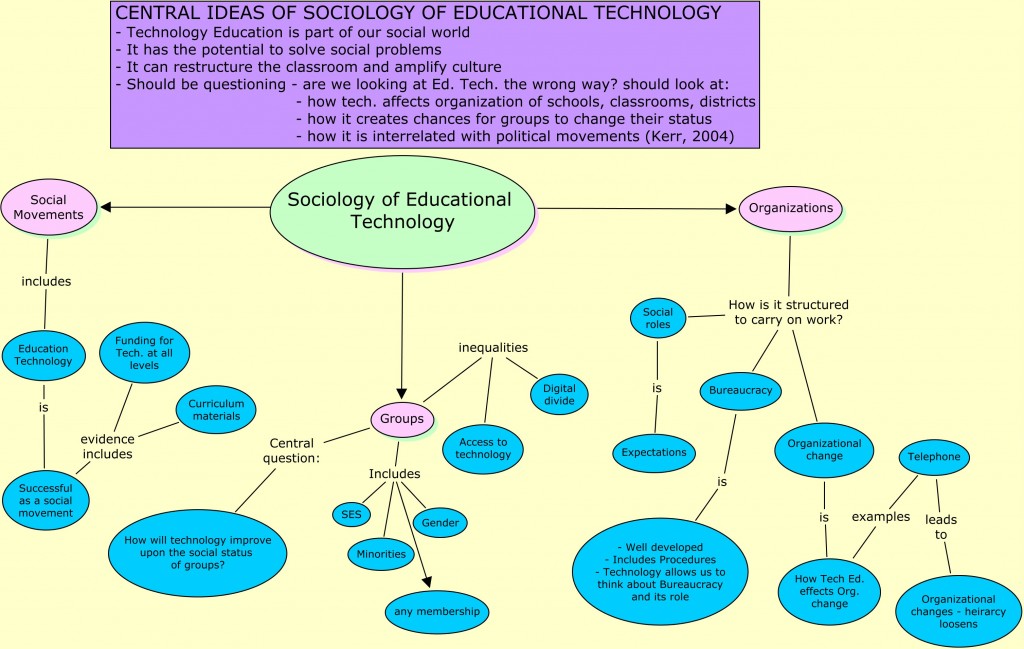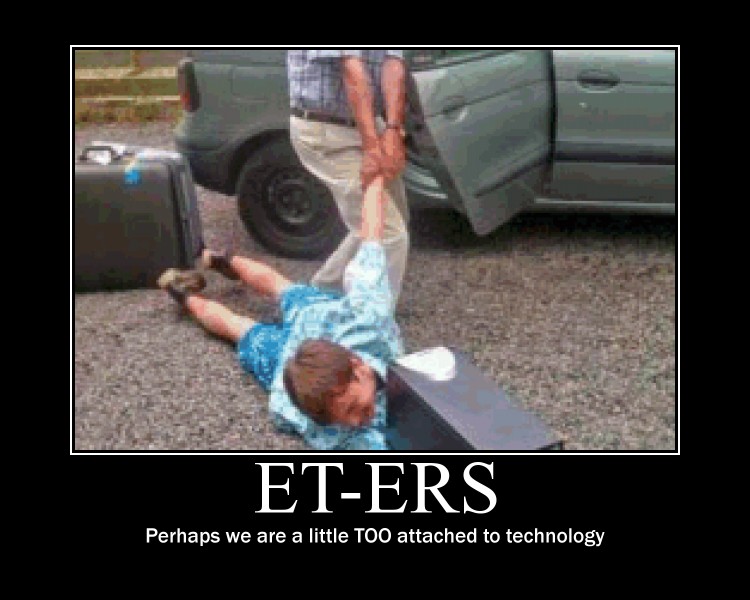MODULE 4
The Anthropology & Sociology of Educational Technology
________________________________________
Our Website: module4.wordpress.com/
Our Team: Rachel Fales, Lindsey Martin, Dan Ceraldi, Everton Walker and Carmen Mihu
Contents:
(i) Schedule of Activities
(ii) List of Readings
(iii) Key Terms
(iv) Overviews
(v) Discussion Questions
(iv) Vista Live Forum Participation
________________________________________
ACTIVITY SCHEDULE
September 30, 2010 Do the readings for Module 4
Familiarize yourselves with our website
October 1, 2010 Choose one question out of the 5 and answer in Vista
October 2, 2010 Choose one other posting by your peers and reply to it in Vista
October 3, 2010 Watch the Digital Story and join us for discussion in Vista chat @ 7:00 pm Vancouver time. (check last entry in handout)
October 4, 2010 Comment in our blog on our overall presentation of Module 4
READINGS
1. Monahan, T. (2005). Technological cultures. In Globalization, technological change and public education (pp. 73-92). New York: Routledge.
2. Kerr, S. T. (2004). Toward a sociology of educational technology. In D. H. Jonassen (Ed.), Handbook of research on educational communications and technology (pp. 113-142). Mahwah, NJ: Erlbaum.
3. Petrina, S. (2007). What is culture? Vancouver, BC: Tech no-Printing Press.
________________________________________
KEY TERMS
Anthropology
1: the science of human beings; especially :
the study of human beings and their ancestors
through time and space and in relation to
physical character, environmental and social
relations, and culture
2: theology dealing with the origin, nature,
and destiny of human beings”.
(Merriam-Webster, 2010).
Sociology
1: the science of society, social institutions, and social relationships; specifically : the systematic study of the development, structure, interaction, and collective behavior of organized groups of human beings
2: the scientific analysis of a social institution as a functioning whole and as it relates to the rest of society”. (Merriam-Webster, 2010).
What exactly is an IT Specialist?
The IT Specialist essentially is a knowledge worker. Within the realm of education it entails many levels of technology proficiency. Please click on the link below which takes you to the ISTE (International Society in Technology Education) website. Note the different levels and skills required of the IT specialist.
http://www.iste.org/content/navigationmenu/nets/fortechnologyfacilitatorsandleaders/technology_facilitation_standards.htm#Tech
The Sociology of Educational Technology
Below is a concept map regarding the key terms and useful information for the sociology of educational technology. Please click on the image to see the larger format.
________________________________________
OVERVIEW OF READINGS
What is culture?
This article seeks to explore the dynamics of culture through simple and complex definitions and explanations based on how it is viewed in cultural studies and by anthropologists; complex and simple as can be seen in numbers one and two respectively.
1. the act of developing the intellectual and moral
faculties especially by education; enlightenment
and excellence of taste acquired by intellectual
and aesthetic training.
2. the customary beliefs, social forms, and material
3. traits of a racial, religious, or social group.
It presents a deeper understanding of the term and on several occasions deviates from the average person’s understanding of the term. However, with clear explanations, the keywords of the term are maintained; namely: social forms, customary beliefs, material traits from racial and religious groups. In addition, the way educators usually view and interpret culture is outlined; for example, multi-culturalism, the way different cultures around the world celebrate, tolerate, interact with and treat diversity and difference. Also, the components of culture in any given society are identified and documented in understandable bits based on cultural anthropologists, Beals, Hoijer and Beals (1977). They view the components as follows:
• a group or society consisting of a set of members
• an environment or context where the members carry on characteristic activities
• a material culture consisting of the equipment and artefacts used by the members
• a cultural tradition that represents the historically accumulated decisions of the members
• the human activities, rituals, and behaviours emerging out of complex interactions among the members, the environment, the material culture and the cultural tradition
Tech Cultures
In this chapter, Monahan discusses the
technological cultures, in particular, those
of the emerging occupational groups in
L.A. Unified (Los Angeles Unified School District).
Monahan discusses each group’s roles and their place
within the school district. For example, Instructional
Technology Application Facilitators (ITAFs) at the
local district level, responsibilities range from
“communication, translation and negotiation between
school site technology coordinators and
central-level district administrators” (2005, p. 77).
The detailed explanation explains how the formal structure of L.A. Unified functions. Despite the varying roles, specific job expectations and differing value systems, all seem to be working towards a similar goal of: “the integration of information technology into vital organization functions” (Monahan, 2005 p. 91). Furthermore, through the institution of such technological positions within a school district, a shift from traditional power relations between administrators and teachers has occurred. “Power” is less controlled by information hoarding, due to web access. Monahan, however, explains that technology may have neutralized “power”, but has created more job security and resource control for the technologists within the district (2005).
There may be a finite infrastructure within the school district, but it has sometimes reverted to informal networks. These informal networks, such as converting shops into computer labs, have helped support the systems of technology within the district. Overall, the technological cultures of L.A. Unified School District may be complex yet informal, all work towards the integration of information technology and destabilization of traditional power relations between administrators and teachers, while occasionally reverting to informal networks.
Sociology of ET
How should we move towards creating a Sociology
of Educational Technology? Kerr’s goal is explicit.
After pointing out the significant absence of meaningful
research in this field, Kerr attempts to fill this academic
void. He clearly outlines four specific aims:
i ) to determine what ought to be the contents of a
sociology of educational technology
ii) to review the pertinent articles in this field
iii) to investigate and draw from wider related areas
of influence on the stated goal and
iv) to set the course for future research and development of the topic.
In terms of the ‘contents’, Kerr recognizes the need to satisfy the specific needs of two distinct audiences – educators (and their connected stakeholders) and sociologists. For sociologists, Kerr focuses on an investigation of collaborative learning environments, on explaining social roles and on the ‘organic ness’ of organizations. For educators, he examines the nature of interpersonal relationships between the various stakeholders, and two aspects of social reform- i) systemic social imbalances and disadvantages inside and outside of traditional education and ii) an attempt to promote progressive changes in education’s ‘bureaucratic’ structure. Kerr also rightly points out inherent ideological nature of education technology when seen as a distinct social movement. In doing so, he rightly points out the common resistance of ‘technocrats’ to admit that their science is value laden.
In addition, Kerr involves all concerned parties by examining schools as organizations
Then widens the conversation by discussing the social characteristics of non-traditional (informal) learning environments (i.e museums, and the Internet).Kerr also briefly illuminates the necessary difference, benefits and underutilization, of using sociological research methods (surveys, and participant observation) versus traditional educational ones.
Throughout the article, Kerr repeatedly weaves questions concerning the role, relevance and impact of educational technology on each topic of discussion. For example, Kerr highlights woman, minorities, and economic class as traditionally disadvantaged’ groups and discusses the extensive research in gender, and minorities, in regards to their ‘unique’ relationship to education technology . At the same time, he identifies the lack of research in the relationship of economic class and the use and impact of technology.
Kerr concludes by highlighting the ‘real’ impact of educational technology on the society of education. For Kerr , it’s the ability of educational technology to change the ‘way things are done in school ‘– from social interactions, to teachers decisions, to creating positive social change and to promoting and encouraging an individual’s social responsibility to invoke change – for a ‘better world’.
________________________________________
DISCUSSION QUESTIONS
Please choose 1 of the following 5 questions and post the answer to Vista, under the corresponding question. Also, please reply to one other post on any of these questions:
1. According to Monahan, “many high schools and most middle schools cannot fund” and do not have specific technology positions in place (2005, p. 76). Is this the case where you work? Or are ‘tech-enthusiasts’ willing to take on the extra responsibilities without the extra pay?
2. Kerr concludes that educational technology primary impact on schools is on its sociology (on social reactions and the look and feel of classrooms) rather than on instructional learning and transference of skills. Do you agree or disagree? Why?
3. “Culture can also be defined as a circuit of power, ideologies, and values in which diverse images and sounds are produced and circulated, identities are constructed, inhabited, and discarded, agency is manifested in both individualized and social forms, and discourses are created, which make culture itself the object of inquiry and critical analyses.” Given the introduction of technology in education, how would you say identities are constructed, inhabited, and discarded?
4. Is the digital divide something we still need to be aware of? Is there a new international digital divide? In our increasing technical world, are there any solutions for those who have limited or no access to technology?
5. In your teaching environment, how does culture impact your practice, selection of teaching and learning materials and relationship with students? What should be put in place to create the perfect classroom environment for multicultural groups?
________________________________________
VISTA LIVE FORUM PARTICIPATION
NOTE: For the live forum, you will all be participating in your Module group in one of the chat rooms available in Vista. There are 5 rooms in total and 6 groups. Below is a guide outlining what groups will be participating in which room.
Vista chat groups – Chat time will be Sunday, October 3rd at 7pm Vancouver time. If you are unable to make it to the chat due to scheduling issues we will post the chat transcripts on Vista so you can catch up.
The following groups will report to “The Foundations” chat in Vista:
(monitor – Lindsey Martin)
DLG 3
Leslie Dawes
Christie Robertson
Jennifer Stieda
Janet Galbraith
Gurneet Anan d
DLG 5
Darren Hutchings
Shari Virjee
Kenneth Buis
Jaki Braidwood
The following groups will report to “The Excavation” chat in Vista:
(monitor – Rachel Fales)
DLG 6
Yurim Debby Kim
Tamara Wong
Diana Wilkes
Lucy How
Julie Simonsen
DLG 7
Paul Quinlan
Alison Baillie
Timothy Oborn
Keely Switzer
The following groups will report to “The Infrastructure” chat in Vista:
(monitor – Dan Ceraldi)
DLG 8
Perdeep Samra
Debra-Ann Davidson
Kyo Yoon
Barbara Mair Rowberry
DLG 9
Joseph Turco
Devinder Deol
David Horn
Benjamin Cooperman
The following groups will report to “The house of cards” chat in Vista:
(monitor – Carmen Mihu)
DLG 10
Kenton Hemsing
Keisha Edwards-Hamilton
Kerry-Ann Henry
Carmen Cheung
DLG 11
Denise Flick
Shierley Chelliah
Thu Pham
Conroy Hall
Jonathon Brady-Patry


